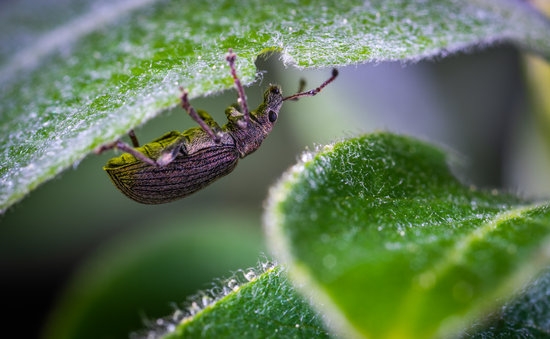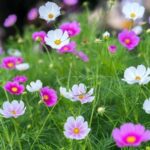Finding the space and time to cultivate a garden while living in an apartment can be challenging. However, with the right gardening ideas for apartment living, it is possible to create a green oasis within the confines of your urban home. From choosing low-maintenance plants to maximizing space with vertical gardening techniques, there are numerous ways to bring the joy of gardening into your apartment.
For apartment dwellers, gardening can offer a myriad of benefits beyond just adding a touch of nature to their living space. It can serve as a therapeutic activity, providing a sense of relaxation and fulfillment amidst the hustle and bustle of city life. Gardening also allows residents to connect with nature, even in a concrete jungle, fostering a sense of well-being and promoting environmental awareness.
In this article, we will explore various gardening ideas tailored specifically for apartment living. Whether you have a balcony, limited indoor space, or access to community gardens, there are creative solutions for every type of apartment dweller looking to bring the beauty of plants into their home. Let’s dive into the world of apartment gardening and discover how you can unleash your inner green thumb in even the smallest of spaces.
Choosing the Right Plants for Apartment Gardening
When it comes to apartment gardening, choosing the right plants is essential for success, especially for those with busy schedules or limited gardening experience. Opting for low maintenance plants can make it easier to care for your indoor or outdoor garden while still enjoying the benefits of growing your own greenery. Here are some plant options that are perfect for apartment living:
- Snake Plants: Known for their air-purifying qualities and minimal care requirements, snake plants thrive in low light and can go for long periods without watering.
- Succulents: These desert plants come in a variety of shapes and sizes, making them perfect for small spaces. Succulents require infrequent watering and can add a pop of color to any room.
- Pothos: Pothos plants are hardy, adaptable, and excellent at purifying the air. They can grow in various light conditions and don’t need frequent repotting.
These low maintenance plant options not only bring natural beauty into your home but also provide health benefits by improving air quality. With these choices, even those new to gardening can easily incorporate greenery into their apartment living space. Whether you have a sunny balcony or a cozy corner indoors, these plants are sure to thrive with minimal effort on your part.
So if you’re looking to start your own urban oasis but don’t have much time to dedicate to plant care, consider incorporating these low maintenance options into your apartment gardening plans. By choosing the right plants that suit your lifestyle and space constraints, you can enjoy all the perks of gardening without added stress or worry.
With a little bit of attention and care, even apartment dwellers can cultivate a thriving indoor or outdoor garden full of life and vitality.
Vertical Gardening Ideas
Utilize Wall Space
One of the best ways to maximize space in a small apartment is by utilizing vertical wall space for your gardening needs. Install floating shelves or hanging planters to create a green oasis indoors. You can grow herbs, succulents, small flowers, and even vegetables vertically. This not only adds a touch of nature to your living space but also helps keep your plants out of the way in tight quarters.
Invest in a Vertical Garden System
Vertical garden systems are specifically designed for apartment dwellers looking to make the most of their limited space. These systems typically consist of stackable planters or pockets that can be mounted on walls or placed in corners. You can create a lush garden with various plants all within a compact area. Consider using these systems for both indoor and outdoor spaces to add some greenery to your environment.
Consider Hanging Planters
If you have limited floor space, consider using hanging planters to bring life to your apartment. Hanging planters come in various styles and sizes, allowing you to showcase your favorite plants without taking up precious real estate on surfaces or floors. Hang them near windows to take advantage of natural light or create a cascading effect by grouping several hanging planters together at different heights.
With these vertical gardening ideas for apartment living, you can transform your small space into a thriving green paradise. Whether you have a sunny balcony or just a few empty walls indoors, there are plenty of creative ways to incorporate plants into your living environment. Experiment with different types of plants, colors, and textures to truly personalize your vertical garden and enjoy the benefits of gardening right at home.
Container Gardening Tips
Container gardening is a fantastic way to bring greenery into your apartment, even if you have limited space. With the right approach and some creativity, you can grow a variety of plants in containers that fit perfectly within your living area. Here are some tips to help you make the most of your container garden:
- Choose the right containers: Opt for lightweight containers that are easy to move around, especially if you have limited sunlight coming into your apartment. Consider using hanging baskets, window boxes, or even repurposed items like mason jars or tin cans.
- Select the appropriate soil: Make sure to use high-quality potting mix that drains well to prevent waterlogging, which can lead to root rot. You may also want to consider adding perlite or vermiculite to improve drainage.
- Match plants with their container size: Different plants have different root systems and space requirements. Be mindful of this when choosing what to plant in each container – herbs and small vegetables may do well in smaller pots, while larger plants like tomatoes may need more room to grow.
Another key aspect of successful container gardening is proper watering and fertilizing. Remember that containers tend to dry out faster than traditional garden beds, so you may need to water your plants more frequently. Fertilize your plants regularly with a balanced fertilizer suitable for container gardening to ensure they receive the nutrients they need to thrive.
With these container gardening tips in mind, you can create a lush and vibrant indoor garden that suits your apartment living space perfectly. Get creative with different plant combinations and container styles to transform your home into a green oasis filled with life and color. Explore various gardening ideas for apartment living to bring nature indoors and enjoy the benefits of nurturing greenery right at home.
Indoor Gardening Techniques
Indoor gardening is a fantastic way to bring the benefits of nature into your apartment, even if you don’t have access to an outdoor space. From boosting indoor air quality to reducing stress and anxiety, having houseplants can greatly improve your living environment. When it comes to indoor gardening, choosing the right plants is key.
Look for low-maintenance options that can thrive in the limited light conditions often found in apartments. Some great choices include spider plants, pothos, snake plants, and peace lilies.
In addition to selecting the right plants, it’s important to consider the lighting and watering needs of your indoor garden. Most houseplants do best with indirect sunlight, so placing them near a window that receives filtered light is ideal. Monitor the moisture levels in the soil regularly and water only when needed – overwatering can be a common issue for indoor plants. Using a humidifier or pebble tray can also help create a more favorable environment for your green companions.
For apartment dwellers looking to take their indoor gardening skills to the next level, consider experimenting with hydroponics or aquaponics systems. These innovative techniques allow you to grow plants without soil by using nutrient-rich water solutions instead.
Not only are these methods space-efficient, but they also provide a fun and educational way to grow herbs, vegetables, or flowers indoors. With some creativity and dedication, anyone can successfully keep their plants thriving inside their apartment all year round with these indoor gardening techniques.
Balcony Garden Inspiration
Creating a balcony garden in your apartment can transform a small outdoor space into a lush oasis where you can relax and unwind. Whether you have a tiny balcony or a larger one, there are numerous gardening ideas for apartment living that can help you make the most of your outdoor area. One way to maximize space is by using vertical gardening techniques.
Hanging planters, trellises, and wall-mounted pots can help you add greenery without taking up valuable floor space. Consider planting herbs, flowers, or even small vegetables in these vertical containers to create a beautiful and functional balcony garden.
Another balcony gardening idea for apartment living is to utilize railing planters or window boxes. These can be attached to the railing of your balcony or placed on the ledge outside your windows to add color and vibrancy to your outdoor space.
Choose plants that thrive in your local climate and receive the right amount of sunlight for optimal growth. Additionally, incorporating seating arrangements or cozy nooks in your balcony garden can create a relaxing atmosphere where you can enjoy your morning coffee or evening book.
If you’re looking for more creative DIY ideas for your balcony garden, consider upcycling everyday items into unique plant containers. Old tin cans, wooden crates, or even mason jars can be repurposed as planters for succulents, herbs, or flowering plants.
Not only does this add a personal touch to your garden, but it also promotes sustainability by reducing waste. Explore different styles and materials to find inspiration for your balcony garden and experiment with combinations that reflect your personality and gardening style.
| Balcony Gardening Tips | Benefits |
|---|---|
| Utilize vertical gardening techniques | Maximizes space |
| Use railing planters or window boxes | Adds color and vibrancy |
| Repurpose everyday items as unique plant containers | Promotes sustainability |
Creative DIY Planters for Apartment Gardening
When it comes to apartment gardening, one of the key aspects to consider is finding creative ways to display your plants in limited spaces. One popular trend among apartment dwellers is upcycling everyday items into unique plant containers. This not only adds a touch of individuality to your indoor garden but also helps in reducing waste by reusing materials that would have otherwise been discarded.
Repurposing Old Containers
One simple yet effective DIY planter idea is repurposing old containers such as tin cans, mason jars, or even wooden crates. These items can easily be transformed into charming plant pots with just a bit of creativity and a splash of paint. Not only does this add character to your apartment’s decor, but it also gives a new life to objects that might have ended up in the trash.
Vertical Planters
Another innovative upcycling idea for apartment gardening is creating vertical planters using items like shoe organizers, pallets, or even old gutters. These vertical gardens not only save space but also provide a visually appealing way to showcase your plants. By utilizing vertical space, you can maximize your indoor greenery without cluttering your living area.
Succulent Gardens in Unexpected Items
Succulents are perfect for apartment living due to their low maintenance nature and ability to thrive in small spaces. Get creative with your succulent arrangements by planting them in unexpected items like teacups, wine corks, or even old books. These tiny succulent gardens not only add a pop of greenery to your home but also serve as conversation starters for guests visiting your apartment.
Community Gardening for Apartment Residents
When it comes to gardening ideas for apartment living, community gardening can be a fantastic option for residents looking to engage in a shared green space. Community gardens provide apartment dwellers with the opportunity to connect with fellow residents, share gardening knowledge, and collaborate on growing various plants and vegetables. By participating in a community garden, apartment residents can benefit from the sense of community and teamwork involved in maintaining a shared outdoor space.
One of the key advantages of community gardening for apartment residents is the ability to access a wider range of plants and gardening tools. In a shared garden setting, individuals can grow different types of flowers, herbs, fruits, and vegetables that they may not have the space or resources for in their own apartments.
Additionally, community gardens often have communal tools such as shovels, watering cans, and pots that can be used by all participants. This collaborative environment allows residents to explore new plant varieties and expand their gardening skills.
Apart from fostering a sense of community and providing access to diverse plant options, community gardens also offer health benefits to apartment residents. Engaging in gardening activities, whether it’s planting seeds or weeding flower beds, can help reduce stress and improve mental well-being.
The physical act of tending to plants outside can also provide exercise and fresh air, promoting overall health and vitality among participants. Ultimately, community gardening serves as a valuable resource for apartment residents looking to enhance their living environment through shared green spaces.
| Benefits of Community Gardening | Key Points |
|---|---|
| Access to diverse plant options | Residents can grow different types of plants that may not fit in their apartments. |
| Health benefits | Gardening activities reduce stress levels and provide physical exercise. |
Conclusion
In conclusion, apartment living should not deter individuals from enjoying the many benefits of gardening. From improving air quality to reducing stress, cultivating plants indoors or on a balcony can truly enhance one’s quality of life. By selecting low-maintenance plants, utilizing vertical gardening techniques, and opting for container gardening options, apartment dwellers can create thriving green spaces within limited areas.
Indoor gardening techniques also offer opportunities to bring nature inside the home, providing a sense of calm and tranquility. Incorporating creative DIY planters not only adds a personal touch to the space but also promotes sustainability through upcycling ideas. For those with access to a balcony or shared community garden, there are even more possibilities to transform small outdoor spaces into lush green oases.
In essence, whether it’s through solo gardening endeavors or participating in communal gardening initiatives, apartment residents can find fulfillment and joy in nurturing plant life. By exploring different gardening ideas tailored to apartment living, individuals can foster a deeper connection with nature right at their doorstep. Embracing the beauty and serenity that plants bring can truly enhance the overall well-being of those residing in urban settings.
Frequently Asked Questions
What Is the Easiest Food to Grow in an Apartment?
The easiest food to grow in an apartment is probably herbs like basil, mint, or parsley. These plants don’t require a lot of space, can thrive in pots on a sunny windowsill, and are relatively low-maintenance.
What Plants Are Easy to Grow in an Apartment?
Plants that are easy to grow in an apartment include spider plants, pothos, peace lilies, and succulents like aloe vera or jade plant. These plants are known for their resilience and ability to thrive indoors with minimal care and sunlight.
How Do You Start a Garden for Beginners in an Apartment?
Starting a garden for beginners in an apartment can be as simple as choosing the right plants, ensuring they have enough light and water, and using suitable containers with proper drainage. It’s also important to research each plant’s specific needs and provide them accordingly for successful growth.
Consider starting with easy-to-care-for plants before moving on to more challenging ones.

Welcome to my gardening blog! I am passionate about plants and enjoy sharing my knowledge and experiences with others. In this blog, I will write about everything related to gardening, from tips on how to get started to updates on my own garden projects.





